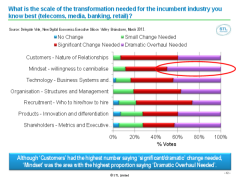
How to embed sustainability across a telco
Industry-leading telcos have captured much of the lower hanging fruit in their progress to net-zero and must now find the incremental gains. This requires integrating sustainability as a priority across all parts of the organisation. What actions and associated KPIs must individual business units within a telco take on to prioritise sustainability day-to-day?







